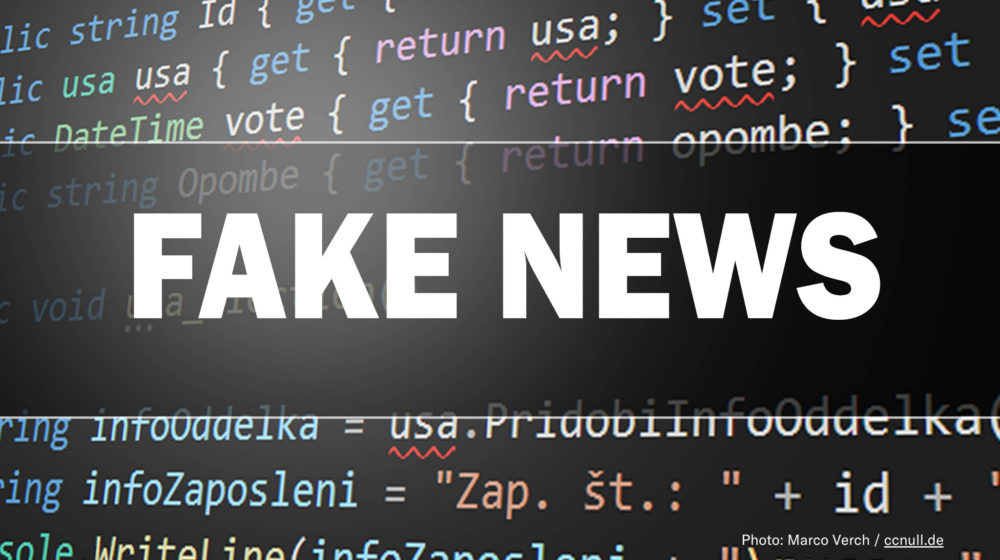Fact or fake? How to spot disinformation online

Israel is said to have staged the Hamas attack, Ukrainian refugees are spreading bedbugs in France, the British monarch King Charles is dead – News items like these can spark outrage, trigger fear, or even provoke laughter. But none of the above headlines are true. How can we protect ourselves from fake news?
We all want to keep up with the latest news – Russia’s war of aggression, the shift to the right in Germany, various upcoming elections… We’re busy reading, sharing, commenting, and liking a wide range of content. But fake news and digital propaganda spread fast, especially during times of crisis. The spread of disinformation is further facilitated by the online reading habits of many internet users who skim-read articles or only look at the headlines.
Anti-democratic users in particular often attempt to influence the political climate by stirring up anger at politicians or inciting hatred of Jews, Muslims, or asylum seekers, for example. In fact, many accounts used in current disinformation campaigns are not controlled by humans – bots, i.e. automated fake profiles, make it much and quicker and easier to spread misinformation.
Different flavors of fake? Here’s how to differentiate between fake news, disinformation, and misinformation
Disinformation: Disinformation refers to false information spread with the intention of deceiving or influencing other people. Even prior to the advent of the internet, this was a known phenomenon associated with political propaganda.
Fake news: Fake news refers to false or misleading information mostly circulated through social media in order to influence political opinion. The 2016 US election was marked by fake news campaigns – often spearheaded by internet users who supported Donald Trump. Trump himself, however, used the term “fake news” to discredit any negative press coverage of himself or any news that didn’t serve his political ends. So the term “fake news” doesn’t only refer to false and misleading information, it’s also used as a political rallying cry.
Misinformation: Similarly to disinformation and fake news, misinformation also refers to information that’s untrue. The difference lies in the underlying intention – misinformation isn’t deliberately intended to deceive people. It can either be information that has been falsely reported (i.e. journalistic errors) or satire.
Entertainment or manipulation: deepfakes
Disinformation can be spread in the form of false statements or through state propaganda. Photos, videos, and audio files that have been manipulated with the help of artificial intelligence are becoming more and more common. They are known as deepfakes. New technologies are making this type of fake more and more realistic and easier to create. People’s faces can be put on other people’s bodies, for example, and their voices can be cloned. As a result of these developments, public figures like politicians are no longer the only victims – private individuals are increasingly finding themselves targeted by this type of manipulation. The primary aim of the people behind deep fakes is to discredit, humiliate, and intimidate their victims.
How to recognize disinformation and deepfakes
People who create and spread disinformation do their best to make their lies appear as convincing as possible. These 6 tips will help you differentiate between fake news and real news:
1. Who’s behind it?
Find out who’s behind the profile that’s spreading the information. Is it a public figure or someone you know personally? Are any sources given to substantiate the information, and are they trustworthy? To unmask bots, it’s often worth looking at the timelines of the profiles.
2. Good credentials
If there’s a link to the news item, you can check the website: Is there any legal information about the website with a name and address? Reputable news portals must provide this information. What does the URL look like? Fake websites often imitate well-known media platforms, so take a close look at the spelling.
3. Fact, facts, and more facts
Important news stories are always shared by various news outlets and often refer to official reports or statements made by experts. So you can check a news story by seeing if the facts are confirmed by other media reports. Special fact-checking websites, such as AFP Fact Check or Reuters Fact Check can also help you check facts and spot fake news.
4. How do you feel?
Facts are crucial if you want to recognize disinformation. But try paying attention to your own emotional reaction to specific news stories too, especially if it’s particularly strong. This is important because disinformation often aims to trigger feelings such as outrage, anger, or fear that will prompt us to share, like, or comment on a message. So it’s best to stop and take a deep breath first!
5. Deepfakes – follow the clues
Paying close attention to the following characteristics will help you spot deepfakes more easily: unnatural facial expressions or postures, a blank stare, changes in skin tone, or strange shadows. It’s also worth carrying out a reverse image search using Google or other visual search engines to find out whether the subject of a specific photo actually exists or whether it’s been taken out of context.
6. What day is it today?
Check the date of the news story – is an old piece of news being put in a new context? That’s a common trick: Photos or information related to past events are presented as if they refer to a current event, deliberately distorting the reporting. Here too, a reverse image search can help you detect fake news.
What you can do to fight fake news and disinformation yourself
If you see any indication that a post is spreading disinformation, you can report it directly to the social media platform concerned. It’s worth the effort: The more people report an incidence of disinformation, the faster the post will be checked. That means it can be flagged or even deleted faster too. Be critical! Just because a story goes viral, it doesn’t automatically mean it’s true.

